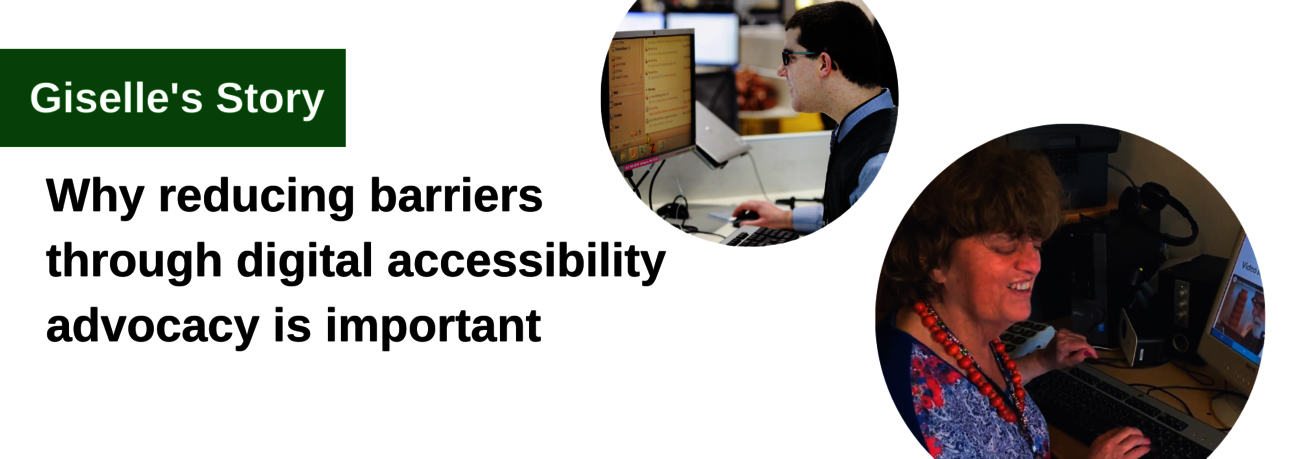My name is Giselle and I am blind. My guide dog, D’Artagnan, is my eyes when I am out and about in the physical world. But I also want to access the amazing digital world. While a computer or smartphone together with assistive technology bring the digital world to my fingertips (for example, I can correspond with my friends, read the newspapers, research subjects of interest), I still encounter accessibility barriers daily, even when I need to access essential digital services.
"As an advocate, I now have a practical how-to resource that I can share."
- Giselle
For me, the Online Accessibility Policy and Toolkit is impactful in several ways. As a blind digital technology user, the Toolkit contributes to removing the barriers that I face and expanding my access to the larger digital world. As an advocate, I now have a practical how-to resource that I can share with ICT developers or policy and lawmakers when I speak about digital accessibility. In 2015, I started a campaign under the Digital Gap Initiative banner after resolving that something had to be done to bring about systemic accessibility reforms across Australia’s legal and social policy frameworks.
My late father, who was an electronics engineer who designed a robotic arm, insisted that accessibility barriers made no sense in the digital world. He would take my arm and move it about and would say, “If I want my robotic arm to do this, I programme it to do this. It’s all about coding.” His words have been the driving force for my digital accessibility advocacy work for 20 years now.
About the Online Accessibility Toolkit: a government-produced model for accessible websites and online content
The Government of South Australia has developed the Online Accessibility Toolkit, a free and publicly available repository to help people make their websites and online solutions more accessible and inclusive.
The repository consists of eight topics, including visual design and user experience, and was co-designed in consultation with people with disabilities. The approach is drawing significant global recognition and is now considered a co-design benchmark across all levels of government in Australia.
“The accessibility Toolkit is an inspiring example of co-designing a truly inclusive online service.”
— The Digital Gap Initiative
In 2022, this initiative by the Online Accessibility Toolkit received a Zero Project Award for its innovative approach, scalability, and impact to remove barriers for persons with disabilities.
A scalable model to remove barriers
Would you like to receive more information on the initiative, and contact the initiators? Find all information in the Zero Project Database along with more than 700 other innovative and scalable solutions to remove barriers for persons with disabilities.
The Online Accessibility Toolkit's Official Website: https://www.accessibility.sa.gov.au/
A first version of this article was published in the Zero Project Report 2022 on Accessibility:
